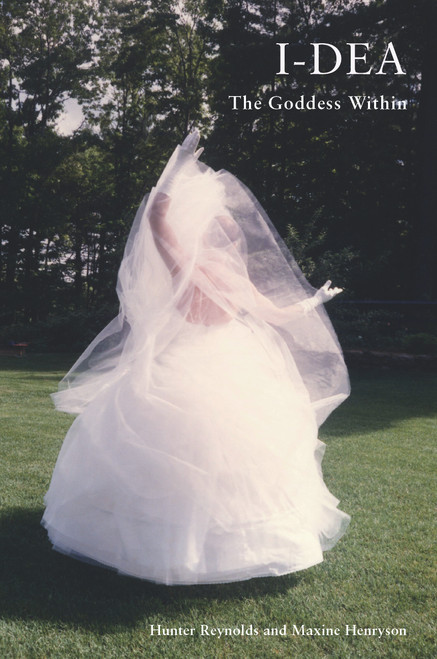I-DEA, The Goddess Within is an artist book of 54 iconic color photographs and diary texts documenting the historic collaboration between the performance artist Hunter Reynolds (1959–2022), aka Patina du Prey and art photographer Maxine Henryson. From 1993 to 2000, Henryson and Reynolds traveled to Berlin, Antwerp, Los Angeles, New York and other cities, creating guerrilla-like street performances and interventions.
Spinning in a large white dress, Patina existed as a mythical dervish figure that deliberately disrupted gender norms in order to relate to the viewer as a shamanistic trans-gendered embodiment of fantasy and healing. In unannounced and confrontational street actions, Henryson and Patina du Prey communicated kinesthetically like satellites as the world passed between them.
"An integral player in each performance, Henryson guaranteed spectators’ attention—What’s going on here? Who is she photographing? The accompaniment promised safety, as Patina danced and commandeered a scene, directly engaging onlookers, fielding and provoking confrontations. The pictures betray a range of viewers’ reactions, from shock, delight, bewilderment, indifference, aggression, to contempt.They testify to the symbiotic relationship between performer and chronicler amid the ever-changing frame of spectators." — Julie Ault
Hunter Reynolds (1959–2022) has for over 25 years explored issues of gender, sexuality, HIV/AIDS, politics, mortality, and rebirth through performance, photography, installations, and his alter ego, Patina du Prey. His work is directly influenced by his own lived experiences as an HIV-positive gay man living in the age of AIDS. As a member of ACT UP (AIDS Coalition to Unleash Power) and a co-founder of Art Positive (an affinity group fighting homophobia and censorship in the arts), he used his work to spread a message of survival and hope. The Estate of Hunter Reynolds is represented by P.P.O.W.
Maxine Henryson lives and works in New York and Vermont. A photographer and bookmaker, her work is about place, geographic space and the search for cultural interconnectivity. Her photographic practice draws from traditions including painting, film, performance, installation and sculpture. Henryson’s photographs have been widely exhibited in the United States and Europe and are in numerous private and public collections. Maxine Henryson is represented by A.I.R. Gallery, New York.
Published by Artist Publications, 2022
112 pp, softcover, 9 x 6 inches
Text by Julie Ault
Designed by Pascale Willi
ISBN: 978-0-578-26748-7
"As a gay man and an artist, Mr. Reynolds was already interested in exploring the limits and the possibilities of gender. As a gay man recently diagnosed with H.I.V. and a member of ACT UP, the grass-roots protest group founded by Larry Kramer and others, he was on the front lines of the fight against the disease that would eventually kill him — and against the homophobia in politics, health care and the art world that made the fight so much more urgent. Making art that focused on his body would become increasingly important to him." — Penelope Green, The New York Times
"With a practice that spanned performance, photography, and intricate large-scale installations, Reynolds is perhaps best known for his drag alter ego Patina du Prey, which he created in 1989, the year he learned he was HIV-positive, though he likely contracted it in 1984. Reynolds retired the persona in 2000 and it was the focal point of an exhibition at P.P.O.W. in 2019. With the advice of artist Ray Navarro (the two had attended L.A.’s Otis College at the same time and became friends in New York) in his head of not letting the disease control or define him, Reynolds went on to make the era’s most poignant and powerful reflections of the actual toll that HIV/AIDS had brought to the country’s queer communities." — Maximilíano Durón, ARTnews





